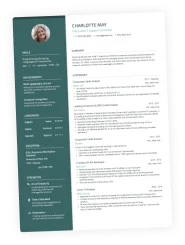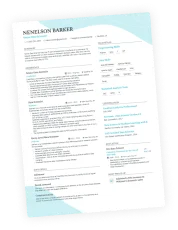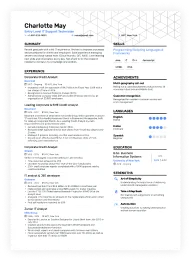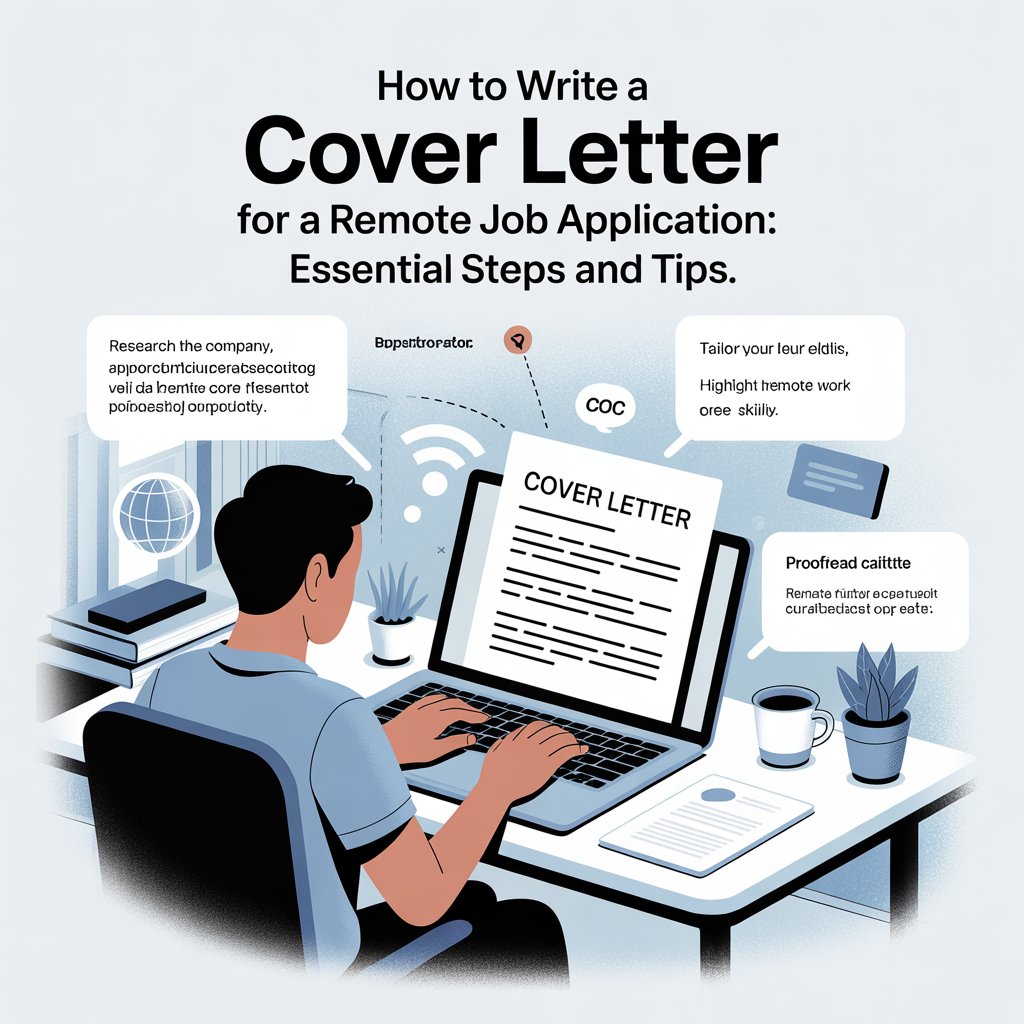Writing a cover letter kerja can feel daunting, but it’s a key part of your job application. This document gives you a chance to showcase your personality, explain why you’re a great fit for the position, and highlight your relevant skills. In this article, we’ll break down the essential elements of a strong cover letter, share tips for tailoring it to specific jobs, and provide examples to guide you through the process.
Key Takeaways
- A cover letter kerja is vital for making a good first impression.
- Tailor your letter to each job application for better results.
- Highlight your most relevant skills and experiences.
- Keep your cover letter clear and error-free.
- Use a professional format to enhance readability.
Understanding The Importance Of A Cover Letter
Why A Cover Letter Matters
Okay, so you’re probably thinking, “Do I really need a cover letter?” In today’s job market, where you can apply with one click, it might seem like an old-fashioned thing. But trust me, it still matters. A lot. A well-crafted cover letter can be the thing that sets you apart from the pile of resumes. It’s your chance to show some personality and explain why you’re genuinely interested in the job. Think of it as your opening statement – a way to grab the hiring manager’s attention and make them want to learn more about you. It shows you’ve put in the extra effort, which speaks volumes about your work ethic. It’s not just about repeating what’s on your resume; it’s about telling your story and connecting with the company on a personal level. It’s a chance to highlight your relevant skills and experiences in a way that a resume simply can’t.
How It Complements Your Resume
Your resume is like a highlight reel of your work history – dates, job titles, and bullet points. It’s factual and concise. A cover letter, on the other hand, is where you add color and context. It’s where you explain why you made certain career choices, how you overcame challenges, and what you learned from your experiences. It’s your chance to show, not just tell. For example, instead of just saying you have “strong communication skills,” you can describe a specific situation where you used those skills to resolve a conflict or lead a team. The cover letter lets you connect the dots between your past experiences and the requirements of the job you’re applying for. It’s a chance to show how your unique background makes you the perfect fit. It’s more than just a summary; it’s a narrative that brings your resume to life. Think of it as the trailer to your movie – it should make them want to see the whole thing. A good cover letter enhances your job application and makes it more compelling.
Common Misconceptions About Cover Letters
There are a lot of myths floating around about cover letters. One of the biggest is that they’re all the same. People think they can just use a generic template and send it out with every application. That’s a huge mistake! Another misconception is that cover letters are only for certain types of jobs or industries. While some industries might value them more than others, a well-written cover letter can be an asset in any field. Some people also believe that if a job posting doesn’t specifically ask for a cover letter, it’s not necessary. But even if it’s not required, submitting a cover letter shows initiative and demonstrates your genuine interest in the position. It’s always better to err on the side of caution and include one. Finally, some people think that cover letters are just a formality – something that hiring managers don’t even read. While it’s true that some hiring managers might skim them, many others take them very seriously. A strong cover letter can be the deciding factor between getting an interview and getting passed over. Don’t let these misconceptions hold you back. Take the time to craft a compelling cover letter, and you’ll significantly increase your chances of landing your dream job.
A cover letter is your chance to make a personal connection with the hiring manager. It’s your opportunity to show them who you are, what you’re passionate about, and why you’re the best candidate for the job. Don’t waste it with generic statements or recycled phrases. Make it count!
Key Components Of An Effective Cover Letter
Contact Information Essentials
Okay, so first things first, you gotta make sure they know how to reach you. Obvious, right? But you’d be surprised. Start with your full name, address, phone number, and email. Make it clean and easy to read. Think of it as your professional handshake before they even read the good stuff. It’s like, if they can’t find you, how are they gonna hire you? And hey, double-check that email address – no one’s taking “partyanimal88@” seriously. Keep it professional, folks. Here’s a quick checklist:
- Full Name
- Address
- Phone Number
- Professional Email
Crafting A Strong Opening
Alright, listen up, because this is where you either hook ’em or lose ’em. Your opening paragraph is prime real estate. Don’t waste it with generic fluff. Instead, grab their attention right away. Mention the specific position you’re applying for and where you saw the job posting. Then, drop a little something about why you’re genuinely excited about the opportunity. Show some personality, but keep it professional. Think of it like this: you’re starting a conversation, not reading a script. Make it clear why you’re writing and why you’re interested.
A strong opening sets the tone for the entire letter. It shows you’ve done your homework and are genuinely interested in the position and the company. It’s your chance to make a memorable first impression.
Highlighting Relevant Skills
Now, this is where you show them what you’ve got. Don’t just list your skills; connect them to the job requirements. Read the job description carefully and identify the key skills they’re looking for. Then, provide specific examples of how you’ve used those skills in previous roles. Use the cover letter template to make sure you don’t miss anything. Quantify your achievements whenever possible. For example, instead of saying “Improved customer satisfaction,” say “Improved customer satisfaction scores by 15% in six months.” Here’s a simple way to structure it:
- Identify the key skills from the job description.
- Provide specific examples of how you’ve used those skills.
- Quantify your achievements whenever possible.
Tailoring Your Cover Letter To The Job
Researching The Company
Before you even start writing, do your homework. I mean, really dig in. Don’t just skim the “About Us” page. Look at their recent news, their social media, and even their competitors. Understanding the company’s values, mission, and current projects will help you craft a cover letter that speaks directly to their needs. This shows you’re not just looking for any job, but the job at their company.
Aligning Your Skills With Job Requirements
This is where you connect the dots. The job description is your cheat sheet. Carefully read through it and identify the key skills and qualifications they’re looking for. Then, think about your own experience and how it aligns with those requirements. Don’t just list your skills; provide specific examples of how you’ve used them to achieve results. For example, instead of saying “I have strong communication skills,” say “I successfully led a team of five in presenting a new marketing strategy to senior management, resulting in a 15% increase in lead generation.”
Using Keywords From The Job Description
Applicant Tracking Systems (ATS) are often used by companies to filter through applications. These systems scan for specific keywords related to the job. So, sprinkle relevant keywords from the job description throughout your cover letter. But don’t just stuff them in randomly. Make sure they fit naturally into the context of your writing. Think of it as speaking the same language as the employer. It’s about showing them you understand what they’re looking for and that you have the skills and experience to meet their needs. You can also use a generic cover letter to highlight your qualifications.
Tailoring your cover letter shows you’ve taken the time to understand the company and the role. It demonstrates your genuine interest and increases your chances of getting an interview. It’s not just about what you’ve done, but how what you’ve done makes you the perfect fit for this specific job.
Common Mistakes To Avoid In Your Cover Letter
Overly Generic Content
One of the biggest mistakes is sending a cover letter that could apply to any job at any company. Your cover letter should be tailored to the specific position and company you’re applying to. It shows you haven’t taken the time to understand the role or the organization. Instead, do your research and make sure your letter speaks directly to the job requirements.
Spelling And Grammar Errors
Typos and grammatical errors can instantly sink your application. Proofread carefully! It suggests a lack of attention to detail, which employers may see as a red flag. Here’s a quick checklist:
- Use a grammar checker.
- Ask someone else to read it over.
- Read it aloud to catch errors your eyes might miss.
A cover letter riddled with mistakes tells the hiring manager that you might not be the best fit. It’s worth the extra time to ensure your letter is polished and professional.
Neglecting To Follow Instructions
Some job postings have specific instructions for submitting your application, including the cover letter. Ignoring these instructions can be a quick way to get your application tossed out. Always read the job description carefully and avoid not following instructions. For example, if they ask for a specific file format or subject line, make sure you comply. It shows you can pay attention to detail and follow directions.
Formatting Your Cover Letter For Success
Choosing The Right Font And Size
Selecting an appropriate font and size is more important than you might think. It’s about readability and making a good first impression. Stick to professional fonts like Arial, Times New Roman, or Calibri. These are easy to read and won’t distract the hiring manager. Font size should be between 11 and 12 points. Anything smaller might strain the reader’s eyes, and anything larger can look unprofessional. Consistency is key, so use the same font throughout the entire document. This shows attention to detail, which is always a plus. Think of it as dressing professionally; the font is your cover letter’s suit and tie. You want it to be neat, clean, and appropriate for the occasion. If you want to find out more about cover letters, there are many resources available.
Maintaining A Professional Layout
Layout is everything. A cluttered or disorganized cover letter can quickly turn off a potential employer. Aim for a clean, well-structured layout with sufficient white space. Use one-inch margins on all sides to give your text room to breathe. Single-space your text and use double spaces between paragraphs. This makes the letter easier to scan. Make sure your contact information is clearly visible at the top, and that your signature is professional. A well-formatted cover letter shows that you value clarity and organization, qualities that employers appreciate. Think of it as setting the stage for your qualifications; a good layout makes it easier for the hiring manager to see your strengths. You can also use a cover letter template to help with the layout.
Using Bullet Points Effectively
Bullet points can be a great way to highlight your skills and accomplishments without overwhelming the reader with dense paragraphs. However, use them sparingly and strategically. Here are some tips:
- Keep bullet points concise and focused on quantifiable achievements.
- Use parallel structure for each bullet point (e.g., start each with an action verb).
- Limit the number of bullet points to no more than six per section.
Bullet points should complement your narrative, not replace it. They’re a tool to emphasize key qualifications, not a substitute for thoughtful explanation. Use them to draw attention to specific achievements that align with the job requirements.
Here’s an example of how to use bullet points effectively:
- Increased sales by 15% in Q2 2024 through targeted marketing campaigns.
- Managed a team of five, consistently exceeding performance goals.
- Implemented a new customer service protocol that reduced response time by 20%.
Examples Of Strong Cover Letters
Entry-Level Cover Letter Example
So, you’re fresh out of school and ready to hit the job market? Awesome! Your cover letter is your chance to show off that enthusiasm and potential. Focus on your skills from coursework, internships, or even volunteer work. Don’t be shy about highlighting projects where you took initiative or demonstrated leadership. Even if you lack direct experience, you can emphasize your eagerness to learn and contribute to the company. Think about it: they’re not just hiring you for what you know now, but for what you can become.
- Highlight academic achievements.
- Showcase relevant skills from projects.
- Express enthusiasm for learning.
Mid-Career Professional Cover Letter Example
Alright, you’ve been around the block a few times. This isn’t your first rodeo. Your cover letter needs to scream, “I know what I’m doing!” Instead of just listing your responsibilities, talk about your accomplishments. Quantify your achievements whenever possible. Did you increase sales by 20%? Did you streamline a process that saved the company money? These are the things that will catch a hiring manager’s eye. Also, make sure to tailor your letter to the specific job. Don’t just send out the same generic letter to every company. Show them you’ve done your research and understand their needs. A well-crafted short cover letter can make all the difference.
Remember to use the STAR method (Situation, Task, Action, Result) to describe your accomplishments. This will help you provide concrete examples of your skills and experience.
- Quantify achievements with numbers.
- Tailor the letter to the specific job.
- Use the STAR method to describe accomplishments.
Cover Letter For A Career Change
Okay, so you’re switching gears. That’s cool! But your cover letter needs to address the elephant in the room: why are you changing careers? Be honest and upfront about your reasons. Highlight transferable skills from your previous role that are relevant to the new position. For example, if you were a teacher and are now applying for a sales job, you can emphasize your communication, presentation, and relationship-building skills. Also, show that you’ve done your homework and understand the new industry. Maybe you’ve taken courses, attended workshops, or networked with people in the field. Show them you’re serious about this change and not just looking for a quick fix.
| Skill | Previous Role (Example: Teacher) | New Role (Example: Sales) | Relevance |
|---|---|---|---|
| Communication | Lecturing, explaining concepts | Presenting, negotiating | Essential for building rapport and closing deals |
| Problem-solving | Addressing student issues | Overcoming objections | Critical for finding solutions for clients |
| Time Management | Managing class schedules | Meeting sales deadlines | Important for prioritizing tasks and goals |
- Explain the reason for the career change.
- Highlight transferable skills.
- Show knowledge of the new industry.
Using A Cover Letter Template
Benefits Of Using A Template
Using a cover letter template can be a real timesaver. Instead of staring at a blank page, you’ve got a pre-designed structure to work with. This can help you focus on the content rather than the formatting, which is a big win when you’re juggling multiple job applications. Plus, templates often guide you on what information to include and where to put it, ensuring you don’t miss anything important. It’s like having a cheat sheet for cover letter basics.
- Provides a clear structure.
- Saves time on formatting.
- Ensures all key sections are included.
Templates can also help maintain a consistent and professional look across all your job application materials. This consistency can make a positive impression on potential employers.
Where To Find Quality Templates
Finding good templates is easier than you might think. Many word processing programs, like Microsoft Word and Google Docs, have built-in templates specifically for cover letters. Online resources, such as career advice websites and job boards, also offer a variety of templates that you can download and customize. Just be sure to choose templates that are modern, clean, and easy to read. Avoid anything too flashy or cluttered, as it can distract from your qualifications.
- Microsoft Word.
- Google Docs.
- Career advice websites.
Customizing Templates For Your Needs
While templates are a great starting point, it’s important to customize them to fit your specific needs. Don’t just fill in the blanks with generic information. Tailor the content to match the specific job you’re applying for, highlighting the skills and experiences that are most relevant. Change the wording to reflect your own voice and personality. A customized template shows that you’ve put in the effort and are genuinely interested in the position. Remember to check for any formatting issues after you’ve made your changes.
- Tailor content to the specific job.
- Reflect your own voice and personality.
- Double-check formatting after customization.
The Role Of A Cover Letter In Job Applications
How It Can Set You Apart
A cover letter is more than just a formality; it’s a chance to make a strong first impression. While a resume lists your qualifications, a cover letter allows you to showcase your personality and enthusiasm. It provides context for your resume and demonstrates why you are a good fit for the company’s culture. Think of it as your opportunity to tell a story that your resume can’t. A well-crafted cover letter shows you’ve taken the time to understand the company and the role, immediately setting you apart from candidates who submit generic applications. It’s your chance to highlight specific achievements and explain how your unique skills align with the company’s needs.
The Impact On Hiring Decisions
Hiring managers often use cover letters to quickly assess a candidate’s communication skills and attention to detail. A poorly written cover letter, filled with errors, can be a red flag, suggesting a lack of professionalism. On the other hand, a compelling cover letter can significantly increase your chances of landing an interview. It shows you’re not just qualified on paper, but also articulate and thoughtful. The impact of a cover letter can be seen in the following ways:
- Demonstrates communication skills.
- Highlights relevant experience.
- Shows enthusiasm for the role.
A cover letter is your advocate. It speaks for you when you’re not in the room, emphasizing your strengths and making a case for why you deserve an interview. It’s a chance to connect with the hiring manager on a personal level and show them why you’re the best candidate for the job. Don’t underestimate its power.
When A Cover Letter Is Essential
While not every job application explicitly requires a cover letter, there are situations where it’s considered essential. If the job description specifically requests a cover letter, always include one. Even if it’s not required, consider submitting a cover letter when:
- You’re applying for a role in a competitive industry.
- You’re making a career change and need to explain your transferable skills.
- You want to address any gaps or inconsistencies in your resume.
In these cases, a cover letter can provide valuable context and demonstrate your work-from-home cover letter and motivation. It’s always better to err on the side of caution and include a cover letter, as it shows you’re willing to go the extra mile.
Follow-Up Strategies After Submitting Your Cover Letter
When To Follow Up
Knowing when to follow up after submitting your cover letter and resume is important. Generally, wait about one to two weeks after the job posting’s closing date, or after your application if no closing date was specified. Avoid contacting the employer too soon, as it may come across as impatient or pushy. However, waiting too long might make them forget your application. If the job posting mentions a specific timeline for hearing back, adhere to that. If you interviewed, a thank you note is a great way to follow up.
How To Craft A Follow-Up Email
Crafting a professional and effective follow-up email is key. Start with a clear and concise subject line, such as “Following Up on Application for [Job Title].” In the email body, briefly reiterate your interest in the position and highlight one or two key qualifications that make you a strong candidate. Refer to your previous communication, mentioning the date you submitted your application. Keep the email brief, polite, and professional. Proofread carefully for any errors before sending. Make sure to highlight your achievements in the email.
What To Include In Your Follow-Up
Your follow-up email should include a few key elements to be effective:
- A brief reminder of your application: Mention the specific job title and the date you applied.
- A restatement of your interest: Reiterate your enthusiasm for the role and the company.
- A highlight of your qualifications: Briefly mention one or two key skills or experiences that align with the job requirements.
- A call to action: Express your eagerness to discuss your application further and inquire about the next steps in the hiring process.
- Professional closing: Use a professional closing such as “Sincerely” or “Best regards,” followed by your full name.
Remember, the goal of your follow-up is to reinforce your interest and qualifications without being overly aggressive. A well-crafted follow-up can make a positive impression and increase your chances of landing an interview.
After you send your cover letter, it’s important to follow up. This shows your interest in the job and keeps you on the employer’s mind. A simple email or call can make a big difference. If you want to learn more about how to stand out in your job search, visit our website for helpful tips and tools!
Don’t wait too long to follow up; a week is usually a good time frame. Keep it friendly and professional. For more advice on job applications, check out our resources!
Wrapping It Up
In conclusion, writing a great cover letter is all about making a strong first impression. It’s your chance to show employers who you are and why you’d be a good fit for the job. Remember to keep it clear and concise, highlight your skills, and express genuine interest in the position. Don’t forget to proofread for any mistakes before sending it off. With the tips and examples provided, you should feel more confident in crafting your own cover letter. Good luck with your job search!
Frequently Asked Questions
What is the purpose of a cover letter?
A cover letter explains why you want the job and how your skills fit what the employer needs.
Should I send a cover letter with my resume?
Yes, always send a cover letter with your resume unless the job posting says not to.
How long should my cover letter be?
Your cover letter should be one page long, easy to read, and straight to the point.
What should I include in my cover letter?
Include your contact info, the job you’re applying for, why you want the job, and how your skills match.
Is it okay to use a template for my cover letter?
Yes, using a template can help you structure your cover letter, but make sure to personalize it.
How do I address my cover letter?
Use ‘Dear [Name]’ if you know the person’s name. If not, use ‘Dear Hiring Manager’.
What mistakes should I avoid in my cover letter?
Avoid spelling and grammar mistakes, being too generic, and not following the job instructions.
How can I follow up after sending my cover letter?
Wait about a week or two, then send a polite email asking if they received your application.












